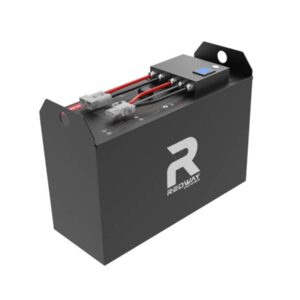How do I know if my battery needs more water?
To determine if your lead-acid battery needs water, check the electrolyte levels through its translucent casing or removable caps. If the liquid sits below the minimum fill line (typically 1/8″ above the plates), add distilled water until it reaches the upper mark. Warning signs include reduced performance, overheating during charging, or visible plate exposure. Always top up after charging and avoid overfilling—excess water dilutes electrolyte density, compromising capacity.
How to Maximize Forklift Battery Lifespan
What are the visual indicators of low battery water?
Plate exposure and low electrolyte levels are primary signs. Most batteries have MAX/MIN markers—fill when liquid dips below MIN. Cloudy or discolored electrolyte (brown/white) indicates sulfation, requiring professional intervention.

Beyond visual checks, practical testing methods exist. Use a refractometer to measure electrolyte specific gravity: readings below 1.225 at 25°C signal undercharge or water loss. Pro Tip: Never add water before charging—expanding electrolyte during charging could cause overflow. For example, a forklift battery showing 1.18 SG in multiple cells likely needs distilled water replenishment after a full charge cycle. Transitional phrases like “Beyond basic observations” and “In operational contexts” help contextualize diagnostics.
How often should I check my battery’s water levels?
Inspect every 2-3 charging cycles for frequent-use batteries. Seasonal equipment may require monthly checks. Temperature extremes accelerate evaporation—monitor weekly in >35°C environments.
Charging patterns directly impact water consumption. Fast charging (C/3 rates) generates more heat and gas, increasing water loss by 30-50% compared to standard C/10 charging. Pro Tip: Maintain levels 3mm below vent wells to prevent acid spillage during gassing phases. A warehouse pallet jack used daily might need biweekly top-ups, while a backup generator battery could require quarterly checks. Tables below compare maintenance intervals across battery types:
| Battery Type | Check Frequency |
|---|---|
| Forklift (Flooded) | Weekly |
| Solar Backup | Monthly |
| Usage Level | Water Loss Rate |
|---|---|
| High (8hr/day) | 100ml/month |
| Low (2hr/week) | 20ml/month |
Battery Expert Insight
FAQs
Can I add water to a sealed battery?
No—sealed AGM or gel batteries are maintenance-free. Attempting to open them voids warranties and risks electrolyte imbalance.
Why does my battery consume water rapidly?
Overcharging is the primary cause—verify charger voltage matches battery specs (13.8-14.7V for 12V systems). Ambient temperatures above 30°C also increase evaporation rates.
